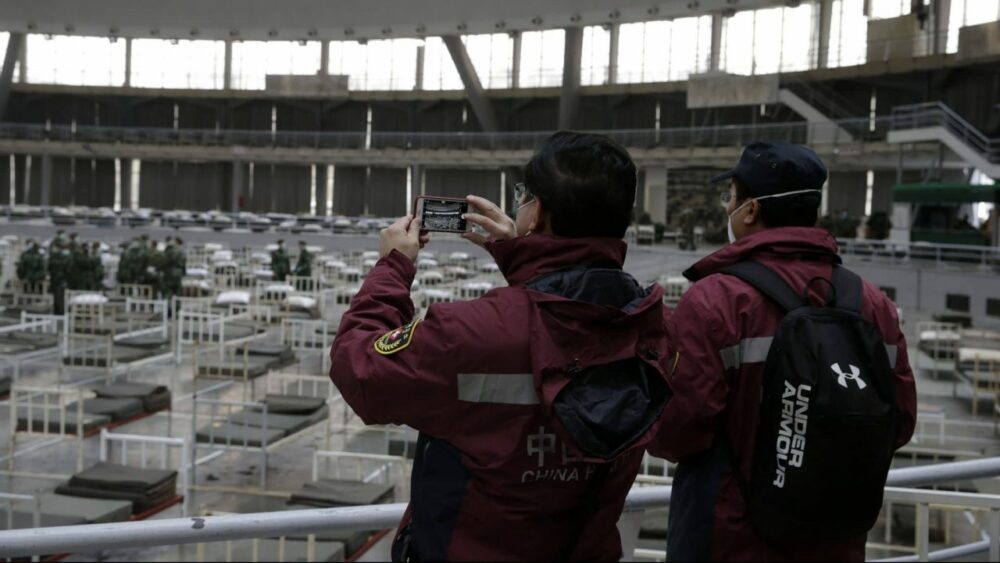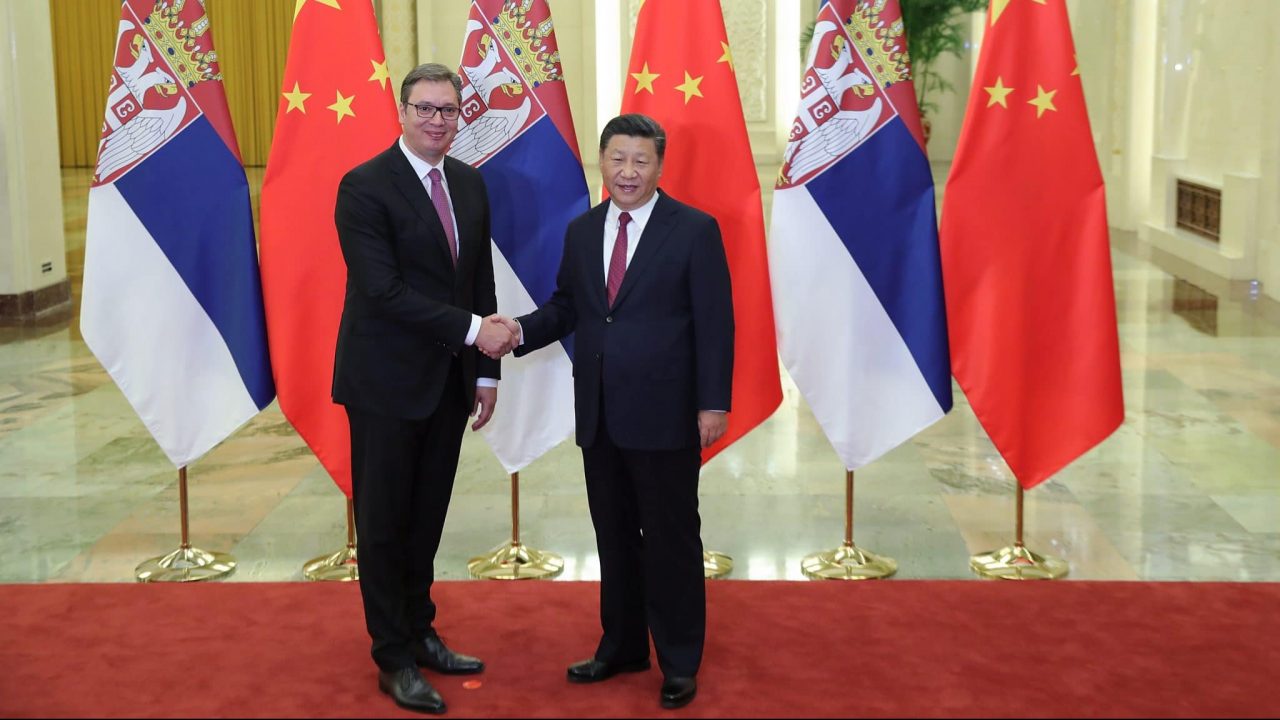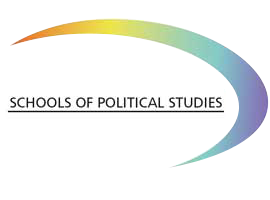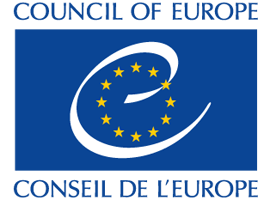Article was originally published on Balkan Insight.
Photo: EPA-EFE/LINTAO ZHANG / POOL
The political elites in Belgrade have made good use of the politically controlled media to transform China’s image in the country.
Close connections with the Serbian political elite and the favourable presentation of China in Serbian media, especially from outlets close to the Serbian government, have made China one of the most popular foreign actors among Serbia’s citizens.
Serbia’s state-owned media outlets, as well as pro-government private media outlets, are leading the way in this – but the number of China-backed media in Serbia is on the rise as well.
In 2020, Reporters Without Borders’ Press Media Freedom Index described the state of media freedom in Serbia as “worrying,” putting Serbia in 93rd place out of 180 countries.
One of the major concerns about the state of the media in Serbia is media ownership – the significant presence of the government in the ownership structure of many media, and the influence of the ruling parties generally on both state and private-owned media outlets.
While independent media outlets still exist in Serbia, they are sidelined and often under constant attack from the politicians of the ruling majority. Their outreach is also not as significant as the outreach of media outlets under the strong influence of the state. Mostly they do not have national coverage and are often available only in certain parts of Serbia or via special services, like cable network news channels.
This high level of control over the media has made the media a useful tool for the ruling elite, and helps it to carry out its political goals.
The fostering of relations between Serbia and China, their positive presentation of their joint infrastructural projects, and the nurturing of the image of China as a friendly country and reliable partner have been major aspects of Serbian foreign and domestic policy for a decade; media outreach is a significant facilitator of those processes.
The promotion of China can be seen as a passive or indirect phenomenon because it is a byproduct of the promotion of Serbian political leaders and of major projects presented as successes of the Serbian government.
In an interview with this author, two journalists from Serbia’s public broadcaster said that there had been an increase in reporting about China by state-owned media outlets. One said this increase is caused both by subjective and objective factors.
The rising number of China-backed projects is one reason for more coverage of the Chinese presence, plus a tendency to look at the cooperation only through the lens of friendship between the two countries, without a critical approach or considering potentially negative aspects.

Another important aspect is that, in both written and oral media statements, Serbian officials and Chinese representatives often highlight the personal connection and even friendship between Serbian President Aleksandar Vucic and Chinese leader Xi Jinping.
Although journalists claim that there is no direct pressure on them to report or write about the Chinese presence in Serbia in a positive manner, self-censorship seems also to play a role.
It is illustrative of a situation in the Serbian media in which political moves of the Serbian leadership are not placed under any investigative or critical lenses by state-owned or government-backed media outlets.
By contrast, independent and autonomous media outlets are more critical about the increased Sino-Serbian cooperation. From an interview with one economic weekly magazine journalist, it is obvious that they look on cooperation between Belgrade and Beijing with more skepticism.
But the magazine journalist said there is almost no possibility for a media outlet not connected to the Serbian government to get any comment or input from Chinese representatives, such as embassy officials. The same journalist said Chinese representatives “do not care” about criticism or concerns raised by independent media outlets. They have firm cooperation with the government and with the pro-government media and are satisfied with that situation.
There are two major channels of positive media representation of cooperation between Serbia and China. The first comes from pro-government and state-owned media outlets, and the second – which has gained more significance in recent years – comes from Chinese or China-backed media outlets in Serbia.
China Radio International, CRI, has been the most active Chinese media in Serbia. While it bases its work mostly in the digital sphere, such as a webpage in Serbian and on Facebook, news published by CRI is often reposted by traditional Serbian media outlets.
While it does not have its own radio frequency, CRI programming is broadcasted through a Serbian radio station named “Welcome to Fun Radio”, WTF. The owner is Aleksandar Mitrovic, the son of a Serbian media mogul and a figure with a close connection to Serbia’s President Vucic – Zeljko Mitrovic.
WTF broadcasts affirmative reports about China, including news about the ruling Chinese Communist Party, as well as promotions of Chinese culture. CRI has cooperated with other media outlets as well, including the Serbian political weekly Nedeljnik, which has published special issues that have included CRI articles.
Beside the print edition, Nedeljnik has a whole section dedicated to China on its website, called “Kina Danas” – China Today. So far, Nedeljnik has published 138 articles about China, most in an affirmative tone, often more like promotional pieces than articles.
Nedeljnik is not the only traditional media with a whole section dedicated to China. The daily paper Politika, one of the oldest media outlets in Serbia, which is 50-per-cent owned by the Serbian state, has a special section titled “Prica o Kini” – Story about China – on its website.
As with the weekly magazine, articles published on the Politika website are mostly positive, written like promotional pieces, and, besides politics, including lifestyle, culture and tourism, with articles such as: “Nine Reasons why the Forbidden City is the Best in the World.”
In addition to CRI, another major Chinese media outlet present in Serbia is CGTN, which is included in the program scheme of two major cable network distributors – Telekom Serbia and Serbia Broadband, SBB. China also has a regular time slot dedicated to the promotion of Chinese culture in the program of Serbia’s public broadcaster RTS.
While the rise in the number of Chinese-backed media in Serbia is significant, it is not the main tool for the creation of a positive image of China.
China has increased its direct outreach and is attempting to expand its soft power through the media landscape, but the biggest contributor to China’s image are Serbian media outlets and their way of reporting on Sino-Serbian cooperation
Passive, positive presentation of China comes through numerous affirmative articles about the successes of the Serbian government and President Vucic. Those articles rarely include a critical viewpoint, and usually come from outlets close to the government, or with the state directly involved in their ownership. It all aids the creation of an overall narrative about Serbian citizens as “pro-Chinese,” while the criticisms of independent media outlets are marginalized.
As long as there is a strong involvement and influence of the government in Serbian media, and intensive cooperation with Beijing, China will continue to be presented as a friend and partner for Serbia.
Stefan Vladisaljev is a program coordinator position at the Belgrade Fund for Political Excellence.
The opinions expressed are those of the author and do not necessarily reflect the views of BIRN.
This article was written as part of the project ‘Western Balkans at the Crossroads: Ways Forward in Analyzing External Actors’ Influence,’ led by the Prague Security Studies Institute. For more information, visit: www.balkancrossroads.com.













